Huarui He
Learning Complete Topology-Aware Correlations Between Relations for Inductive Link Prediction
Sep 20, 2023Abstract:Inductive link prediction -- where entities during training and inference stages can be different -- has shown great potential for completing evolving knowledge graphs in an entity-independent manner. Many popular methods mainly focus on modeling graph-level features, while the edge-level interactions -- especially the semantic correlations between relations -- have been less explored. However, we notice a desirable property of semantic correlations between relations is that they are inherently edge-level and entity-independent. This implies the great potential of the semantic correlations for the entity-independent inductive link prediction task. Inspired by this observation, we propose a novel subgraph-based method, namely TACO, to model Topology-Aware COrrelations between relations that are highly correlated to their topological structures within subgraphs. Specifically, we prove that semantic correlations between any two relations can be categorized into seven topological patterns, and then proposes Relational Correlation Network (RCN) to learn the importance of each pattern. To further exploit the potential of RCN, we propose Complete Common Neighbor induced subgraph that can effectively preserve complete topological patterns within the subgraph. Extensive experiments demonstrate that TACO effectively unifies the graph-level information and edge-level interactions to jointly perform reasoning, leading to a superior performance over existing state-of-the-art methods for the inductive link prediction task.
Modeling Diverse Chemical Reactions for Single-step Retrosynthesis via Discrete Latent Variables
Aug 10, 2022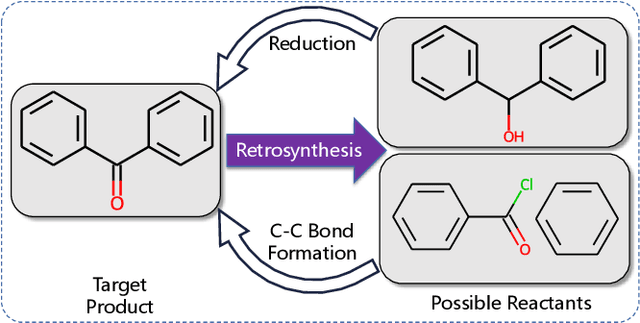

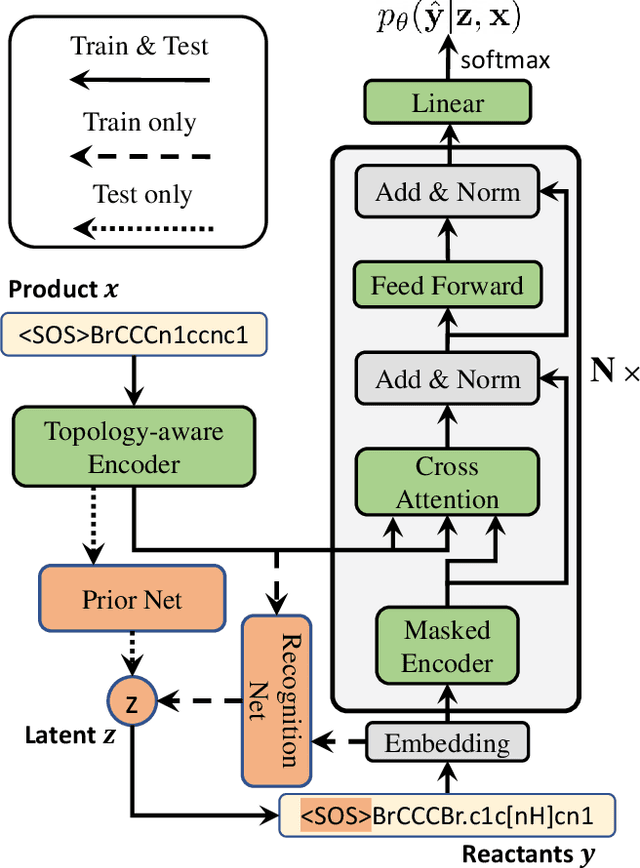
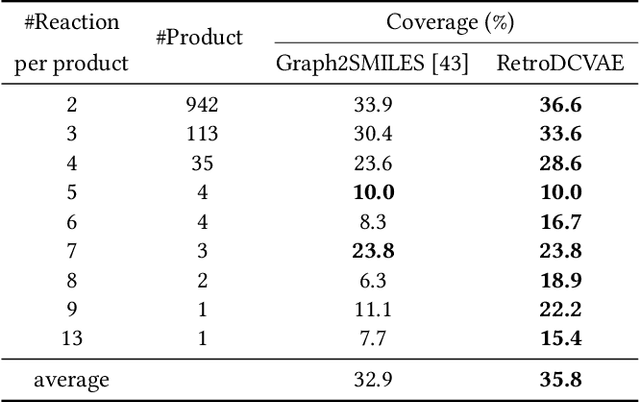
Abstract:Single-step retrosynthesis is the cornerstone of retrosynthesis planning, which is a crucial task for computer-aided drug discovery. The goal of single-step retrosynthesis is to identify the possible reactants that lead to the synthesis of the target product in one reaction. By representing organic molecules as canonical strings, existing sequence-based retrosynthetic methods treat the product-to-reactant retrosynthesis as a sequence-to-sequence translation problem. However, most of them struggle to identify diverse chemical reactions for a desired product due to the deterministic inference, which contradicts the fact that many compounds can be synthesized through various reaction types with different sets of reactants. In this work, we aim to increase reaction diversity and generate various reactants using discrete latent variables. We propose a novel sequence-based approach, namely RetroDVCAE, which incorporates conditional variational autoencoders into single-step retrosynthesis and associates discrete latent variables with the generation process. Specifically, RetroDVCAE uses the Gumbel-Softmax distribution to approximate the categorical distribution over potential reactions and generates multiple sets of reactants with the variational decoder. Experiments demonstrate that RetroDVCAE outperforms state-of-the-art baselines on both benchmark dataset and homemade dataset. Both quantitative and qualitative results show that RetroDVCAE can model the multi-modal distribution over reaction types and produce diverse reactant candidates.
Compressing Deep Graph Neural Networks via Adversarial Knowledge Distillation
May 24, 2022
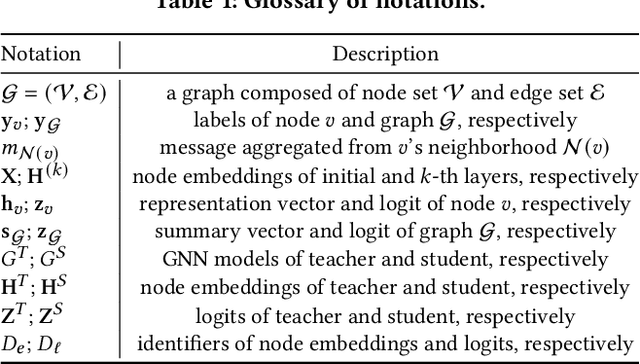

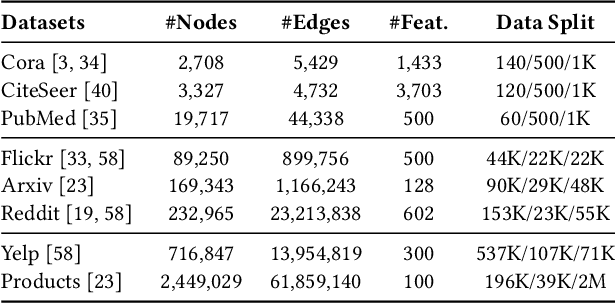
Abstract:Deep graph neural networks (GNNs) have been shown to be expressive for modeling graph-structured data. Nevertheless, the over-stacked architecture of deep graph models makes it difficult to deploy and rapidly test on mobile or embedded systems. To compress over-stacked GNNs, knowledge distillation via a teacher-student architecture turns out to be an effective technique, where the key step is to measure the discrepancy between teacher and student networks with predefined distance functions. However, using the same distance for graphs of various structures may be unfit, and the optimal distance formulation is hard to determine. To tackle these problems, we propose a novel Adversarial Knowledge Distillation framework for graph models named GraphAKD, which adversarially trains a discriminator and a generator to adaptively detect and decrease the discrepancy. Specifically, noticing that the well-captured inter-node and inter-class correlations favor the success of deep GNNs, we propose to criticize the inherited knowledge from node-level and class-level views with a trainable discriminator. The discriminator distinguishes between teacher knowledge and what the student inherits, while the student GNN works as a generator and aims to fool the discriminator. To our best knowledge, GraphAKD is the first to introduce adversarial training to knowledge distillation in graph domains. Experiments on node-level and graph-level classification benchmarks demonstrate that GraphAKD improves the student performance by a large margin. The results imply that GraphAKD can precisely transfer knowledge from a complicated teacher GNN to a compact student GNN.
Topology-Aware Correlations Between Relations for Inductive Link Prediction in Knowledge Graphs
Mar 05, 2021



Abstract:Inductive link prediction -- where entities during training and inference stages can be different -- has been shown to be promising for completing continuously evolving knowledge graphs. Existing models of inductive reasoning mainly focus on predicting missing links by learning logical rules. However, many existing approaches do not take into account semantic correlations between relations, which are commonly seen in real-world knowledge graphs. To address this challenge, we propose a novel inductive reasoning approach, namely TACT, which can effectively exploit Topology-Aware CorrelaTions between relations in an entity-independent manner. TACT is inspired by the observation that the semantic correlation between two relations is highly correlated to their topological structure in knowledge graphs. Specifically, we categorize all relation pairs into several topological patterns, and then propose a Relational Correlation Network (RCN) to learn the importance of the different patterns for inductive link prediction. Experiments demonstrate that TACT can effectively model semantic correlations between relations, and significantly outperforms existing state-of-the-art methods on benchmark datasets for the inductive link prediction task.
 Add to Chrome
Add to Chrome Add to Firefox
Add to Firefox Add to Edge
Add to Edge